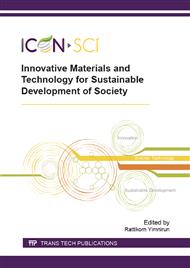p.259
p.263
p.267
p.271
p.275
p.279
p.283
p.287
p.291
Odor Control in the Standard Thai Rubber 20 (STR 20) Industry by Using a Wet Scrubber
Abstract:
This article aims to investigate the potential of using effluent wastewater (called raw wastewater) from wastewater treatment plant as a recirculation liquid in a wet scrubber to remove volatile fatty acid (VFA). This research was conducted in 2 steps. Firstly, surveys and interviews were carried out at STR 20 factory in order to obtain information about STR 20 production and odor control process. Secondly, a study of the potential of using the raw wastewater in a wet scrubber to absorb the VFAs was conducted. The exhausted gas with high VFAs causes malodor in Standard Thai Rubber 20 (STR20) industry. The wet scrubber with counter-current mode runs for 7 operational days. Pall ring is used as packing media without bacterial attachment. The study demonstrates that in these 7 operational days, the raw wastewater has the potential to absorb the VFA. This is indicated by higher VFA concentration 4,372.5 mg/l as acetic acid of a recirculation liquid compared to raw wastewater 75.38 mg/l as acetic acid fed. It increases efficiency of absorbing volatile fatty acid approximately by 24%. VFA concentration in effluent wastewater was found 1,734 mg/L as acetic acid compared to influent wastewater was found 1,395 mg/l as acetic acid fed. In addition, bacterial growth on packing media was observed with volatile solid (VS) and total bacteria count present due to biodegradation of VFA. This information will be useful for further research in the future about biodegradation of VFA by bacterial attachment in packing media.
Info:
Periodical:
Pages:
275-278
Citation:
Online since:
October 2015
Authors:
Keywords:
Price:
Сopyright:
© 2015 Trans Tech Publications Ltd. All Rights Reserved
Share:
Citation:


